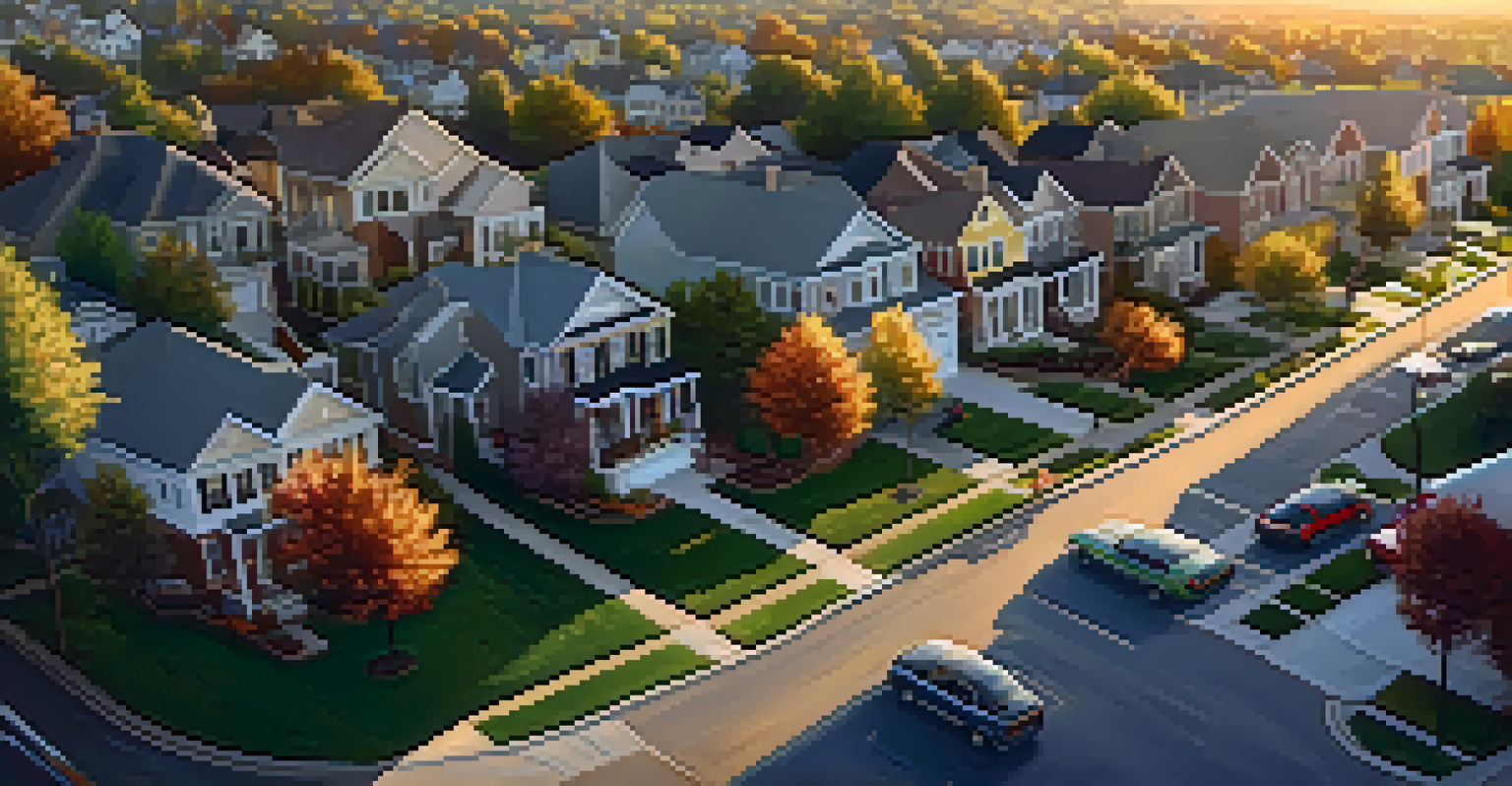Exploring the Intersection of Remote Work and Housing Affordability

The Rise of Remote Work: A Game Changer for Housing
Remote work has surged in popularity, especially since the pandemic, allowing employees to work from anywhere. This shift has raised questions about how it affects housing markets across the globe. As people are no longer tethered to specific locations for their jobs, they are exploring new places to call home.
Remote work has opened a window of opportunity for people to choose their homes based on lifestyle rather than job location.
Many remote workers are leaving expensive urban centers in search of more affordable housing options. For instance, cities like Austin and Denver have seen an influx of people moving from pricier locales like San Francisco and New York. This trend not only impacts housing prices but also the economic dynamics of smaller towns and cities.
As remote work continues to evolve, the traditional notion of where to live based on employment is being redefined. The freedom to choose a home based on lifestyle rather than job location is paving the way for new housing trends.
Housing Affordability: A Growing Concern
Housing affordability has become a pressing issue in many regions, with home prices skyrocketing in the wake of increased demand. As remote workers flock to more affordable areas, the demand can drive up prices, making it challenging for long-time residents to find affordable options. This creates a complex situation where new arrivals contribute to rising costs.

The situation is often exacerbated by limited housing supply, which doesn’t keep pace with the influx of new residents. Many areas that previously had affordable housing options are now struggling to accommodate both newcomers and existing residents. This imbalance can lead to social tensions and a shift in community demographics.
Remote Work Transforms Housing Trends
The rise of remote work is redefining where people choose to live, leading many to seek more affordable housing options away from urban centers.
Moreover, the concept of affordability varies widely from person to person. What is affordable for a tech worker in a thriving remote job might still be out of reach for local service workers and families, highlighting the nuanced challenges of housing affordability in this new landscape.
The Role of Technology in Housing Decisions
Technology plays a significant role in how remote workers choose their living locations. With the rise of digital tools, prospective homebuyers can easily explore neighborhoods, compare prices, and even take virtual tours without stepping foot in a place. This accessibility empowers individuals to make informed decisions about where to live.
The challenge for local governments is to balance growth with the needs of existing residents, ensuring that communities remain inclusive.
Many platforms now offer insights into housing trends, rental prices, and community amenities, making it easier for remote workers to find their ideal home. For example, websites like Zillow and Redfin provide comprehensive data on housing markets that were once hard to navigate. This democratization of information leads to more competitive markets.
However, while technology can facilitate better decision-making, it can also contribute to the rapid gentrification of neighborhoods. As remote workers discover hidden gems, the increased interest can quickly escalate prices, potentially displacing long-time residents and altering community dynamics.
Shifting Preferences: From Urban to Rural Living
As remote work becomes a norm, many professionals are opting for rural or suburban living over urban centers. The appeal of larger spaces, access to nature, and a quieter lifestyle are driving this shift. This trend has led to a notable increase in real estate activity in areas that were previously considered less desirable.
For instance, towns that were once overlooked are now witnessing a renaissance, with new restaurants, shops, and services emerging to cater to the influx of remote workers. This revitalization can enhance local economies but also raises concerns about maintaining the character and affordability of these communities.
Affordability Issues Intensify
As remote workers flock to new areas, housing demand is driving up prices, complicating affordability for long-time residents.
Ultimately, the shift from urban to rural living highlights a significant cultural change. People are increasingly prioritizing quality of life over proximity to work, reshaping the landscape of housing and community in the process.
Local Governments: Adapting to New Housing Challenges
Local governments face the challenge of adapting policies to address the impacts of remote work on housing affordability. As more people move into their areas, officials must find ways to balance growth with the needs of existing residents. This includes creating affordable housing initiatives and zoning regulations that accommodate new developments.
Some cities are implementing measures like inclusionary zoning, which requires a percentage of new constructions to be affordable for low- and moderate-income residents. These policies aim to ensure that as neighborhoods grow, they remain accessible for all residents, regardless of income level.
Additionally, local governments are focusing on infrastructure improvements to support increased populations in once-overlooked areas. By investing in public transportation, schools, and amenities, they can create a more balanced community that benefits both newcomers and long-term residents.
The Impact on Rental Markets: A Double-Edged Sword
The influx of remote workers is also having a profound impact on rental markets, where competition for available units is intensifying. Many landlords are raising rents in response to increased demand, making it difficult for renters to find affordable options. This dynamic can create a ripple effect, driving lower-income individuals out of the market.
On the flip side, some property owners are converting their properties into short-term rentals, capitalizing on the tourism that remote workers bring. This shift can lead to a decrease in long-term rentals available, further exacerbating the affordability crisis for locals. Cities like Nashville and New Orleans have seen significant changes in their rental landscapes due to this trend.
Technology Shapes Housing Choices
Digital tools are empowering remote workers to make informed housing decisions, but this increased interest can accelerate gentrification.
This dual impact on rental markets necessitates a balanced approach to housing policy. Communities must find creative solutions that address the needs of both remote workers and local residents to foster inclusive growth.
Future Outlook: A New Era of Work and Living
As remote work continues to shape housing affordability, the future remains uncertain yet promising. Trends indicate a lasting shift in how and where people choose to live, suggesting that cities may need to adapt to this new reality. Housing strategies that promote inclusivity and sustainability will be essential to navigate these changes.
Innovative solutions, such as co-housing and mixed-use developments, may emerge as effective ways to address the challenges of affordability. By blending residential, commercial, and communal spaces, these models can foster a sense of community while providing diverse housing options.

Ultimately, the intersection of remote work and housing affordability is a dynamic landscape that will require ongoing attention and adaptation. As we move forward, it will be vital for all stakeholders—governments, developers, and residents—to collaborate in creating environments that support a diverse range of lifestyles.